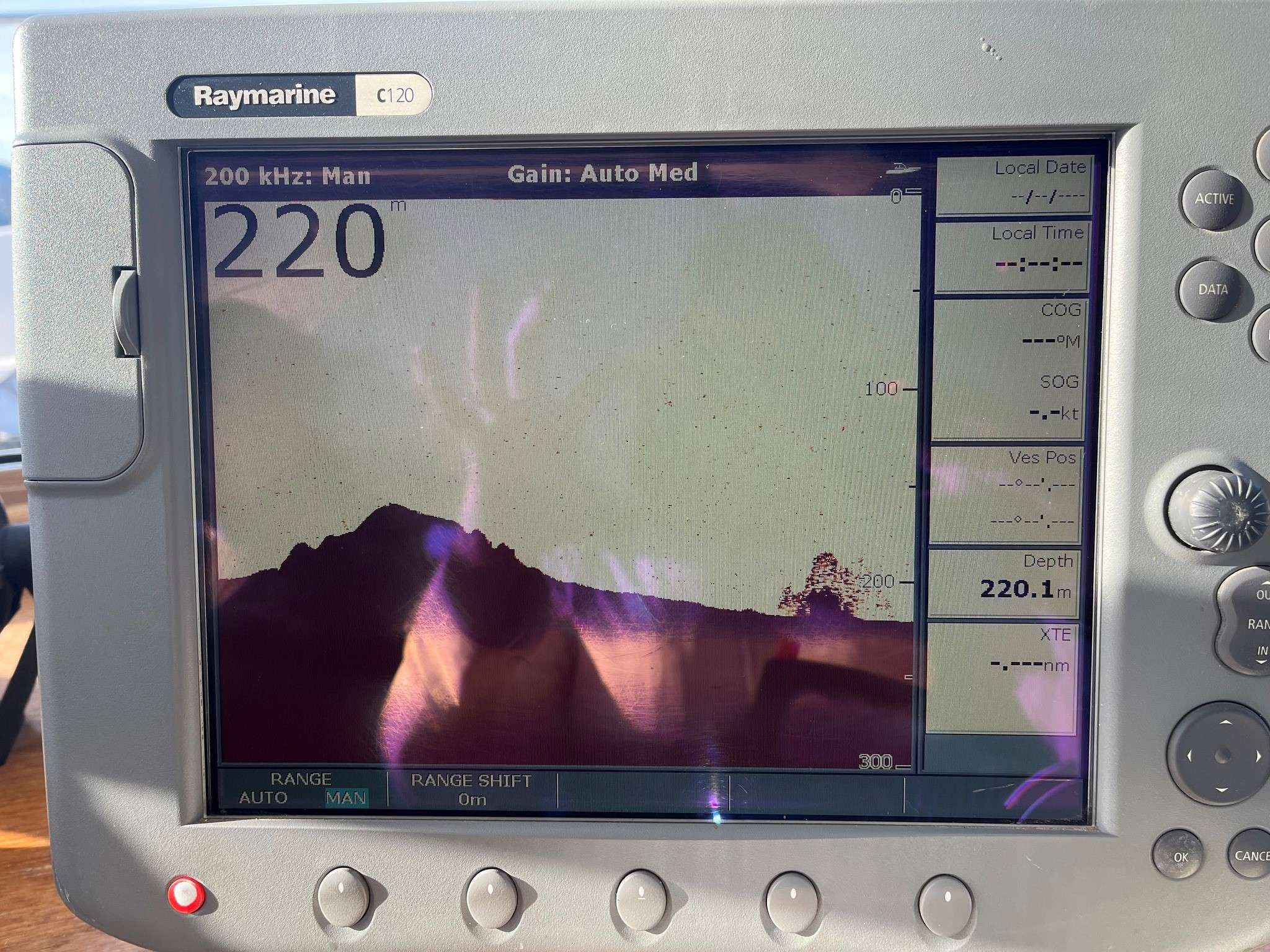Deepscan sonar picks up potential Nessie reading.
On Thursday 3rd October, The Loch Ness Centre had a finding whilst onboard the vessel Deepscan, which has advanced sonar technology to explore the depths of Loch Ness daily. The radar system recorded a sizeable reading that has sparked intrigue and speculation among researchers and enthusiasts.
The radar system, specifically designed to detect underwater objects and formations, identified a distinct anomaly in the loch. While the exact nature of these readings remains under investigation, preliminary analysis suggests they could represent substantial underwater presences or potentially large aquatic creatures inhabiting the loch.
Radar records unexplained disturbance on loch bed

The reading on Thursday 3rd October at n57°14.850 w004°31.688 suggests there was a disturbance on the loch bed. At the time, the team were out on the loch with Aberdeen University for their first official deployment of weeHoloCam and they were passed Urquhart Castle and were heading down to Fort Augustus when their equipment spotted the disturbance on the loch bed. Deepscan cruise uses cutting-edge technology to investigate the unique underwater environment of Loch Ness. With the use of sonar and radar systems, a hydrophone and most recently a state-of-the-art holographic camera, Deepscan has been able to provide The Loch Ness Centre with a detailed understanding of the loch to date.
Nagina Ishaq, General Manager of The Loch Ness Centre, said: “These radar readings have raised many questions about what lurks in the depths of Loch Ness. Our Deepscan cruise has consistently aimed to deepen our understanding of the loch’s ecosystem, and this finding shows that there are still many unknows about the loch. We are currently working with Loch Ness researchers to conduct further analysis of these readings which hopefully mark a major milestone in the search for Nessie.”
Main photo: The radar recorded a sizeable reading that’s sparking curiosity.

